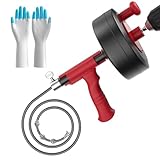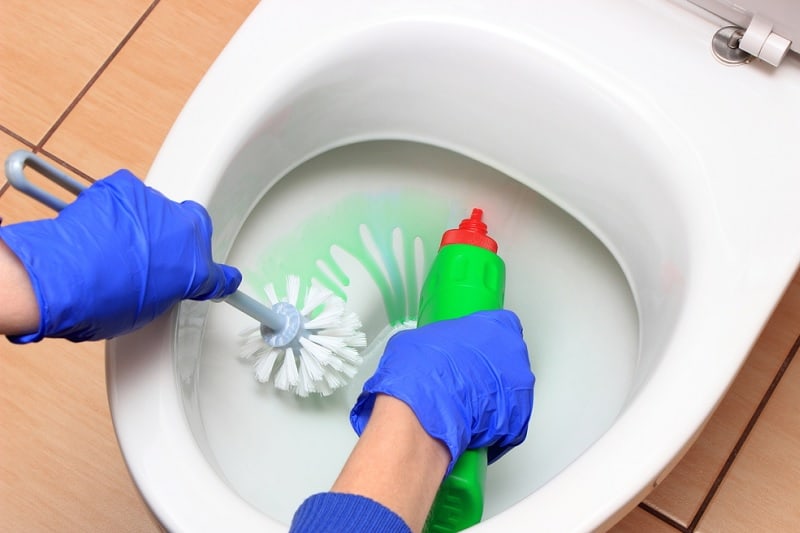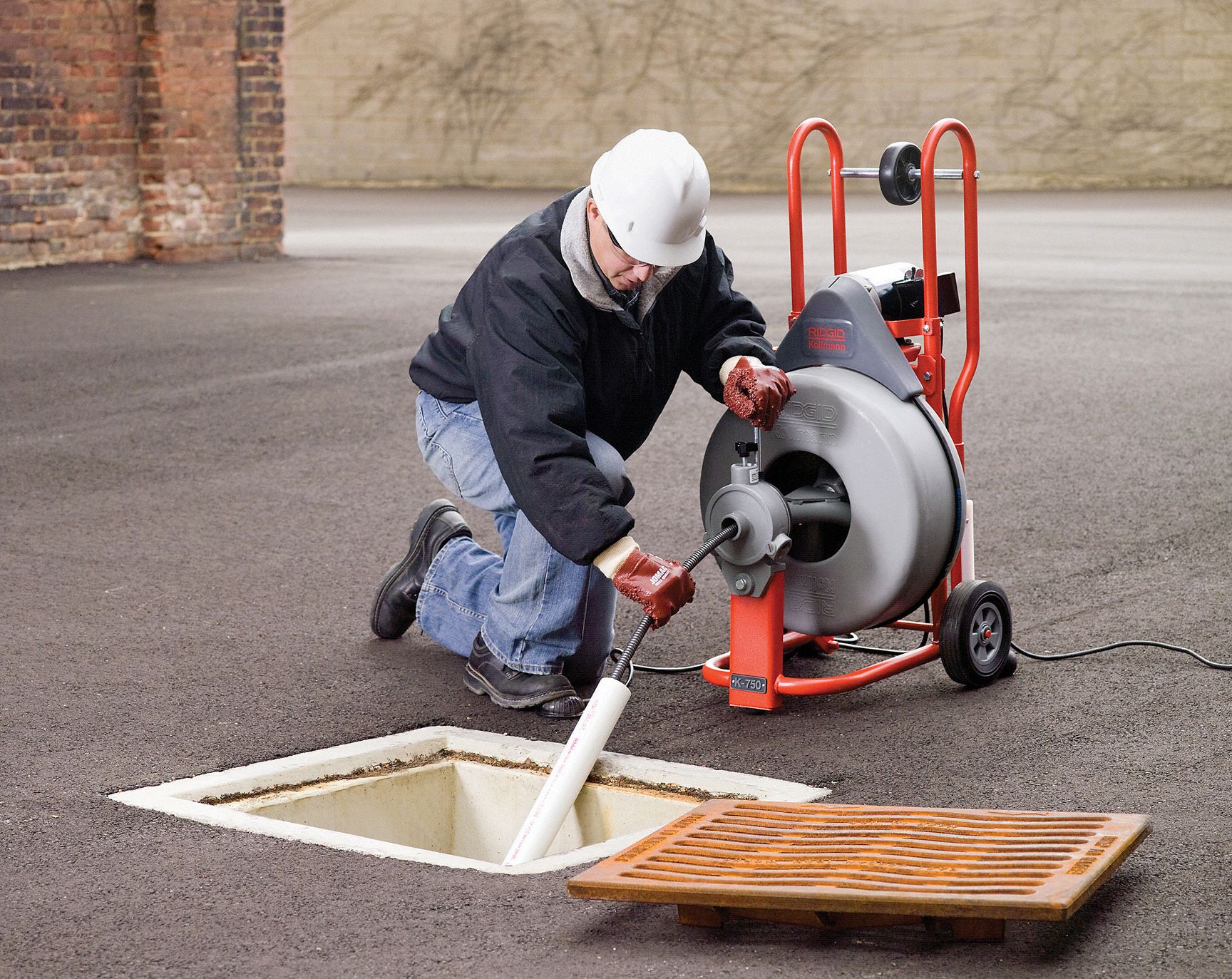A drum auger is one of those tools that every homeowner should have.
It makes the task of unclogging your plumbing as simple as inserting and twisting this tool into your drain, and it only takes four to five turns for it to clean out nearly any clog.
A pistol grip drum auger can be used on both kitchen and bathroom drains, and it’s especially helpful for those pesky clogs that seem to occur time and again.
It is also known as a snake, or sink auger, or canister auger because of its structure.
How Does A Drum Auger Work?
A drum auger is composed of a flexible steel cable wound around a spring-loaded spindle or drum and sealed inside a plastic housing. It is a manual auger in that it needs to be rotated with your hands.
Some versions come with an option to attach an electric drill to make the job a little bit easier. These augers are called drill-powered drum augers.
The end of the cable has a corkscrew-like end, and this end is what enters through the drain pipe and breaks up or reams out whatever objects are clogging it.
A hand crank, gearbox, or drill is used to turn the drum. As the drum turns, the cable spins and pulls the corkscrew head through the clog.
The rotating head breaks up the clog and flings it out of the drain.

Pros of Drum Auger
- Drum augers are inexpensive and easy to use, making them a perfect addition to your home plumbing toolkit.
- They can also be used to unclog any drain, including sinks, showers, and tubs, laundry room drains that may collect hair and soap scum, or outdoor debris such as leaves and roots from overhanging trees.
- They’re also safer than chemical drain cleaners because you don’t have to be concerned about hazardous chemicals seeping into your home’s drains or groundwater.
Cons of Drum Auger
- Drum Augers are only effective at clearing out small clogs that have formed in the straight part of a pipe. For larger clogs, it can take a very long time for the auger to make its way through the clog.
- Additionally, they can be difficult to use in tight spaces and may not be able to reach all the way into the drain.
- And finally, they can cause some damage to your pipes if used incorrectly or excessively.
How to Use a Drum Auger?
Drum augers are easy to use, but there are some important precautions you must take before getting started.
First of all, make sure the water is turned off to the drain you’re unclogging. If this doesn’t work, close the upstream valve and wait a few hours for the clog to dry out a bit so it can be broken up.
It’s also a good idea to wear safety goggles and make sure there aren’t any children or pets in the area you’ll be working, as it can be easy to lose control of this powerful tool.
Start by removing the grate from your drain and clearing away as much debris as possible using a hand auger or other small hand tool.
If the auger doesn’t fit through the hole, you can try using a plunger to break up the clog before trying the drum auger.
Once the area around the drain is clear, it’s time to use the drum auger.

Note: When purchasing an auger, you’ll want to make sure that it is long enough to reach the clog in your drain. The diameter of the tube is also important, as you’ll want one that is large enough to grab onto the clog but small enough to fit through your drain.
Once you have your auger, the next step is to identify the clog.
In most cases, it will be easy to see the clog once you have inserted the auger into the drain. However, if the clog is hidden behind a bend in the pipe, you may need to use a flashlight to find it.
Once you have located the clog, it’s time to start cleaning it out.
With a 25-foot auger, pull out the cable about 12 inches and rotate the setscrew.
Insert the end of the auger into the drain.

Turn the handle on the auger, as the drum spins, feeding the cable into the drain.
You should feel some resistance as you turn the auger, and this is what tells you that it’s caught on the clog.
Twist it a few times to get a good grip on the clog.
Then, slowly but firmly pull the auger back out of the drain. As you do this, make sure to keep twisting the tool so that the clog doesn’t get stuck back on the spindle.
Repeat these steps if the auger gets stuck or if the clog does not come out on the first attempt.

If you’re using an electric drill to turn the auger, simply hold the drill in place and let the auger do the work.
Once the clog is free, run some water through the drain to clear out any remaining debris.
It’s also a good idea to pour a bucket of hot water down the drain to help loosen any remaining clogs.
If you have a recurring clog, you may want to consider using a sink plunger or a chemical drain cleaner to clear it out.
Best Selling Drum Augers in [year] (Updated!)
Tips To The Keep Auger Clean
- While pushing back the auger drum again into the pipeline make sure to clean the cable as much as needed.
- Wash the corkscrew end to prevent corrosion.
- Completely clean off the cable before grazing it into the drum.
- Soak the auger in an anti-bacterial detergent to unlock the leftover debris.
- Use guarding gloves while brushing off the full length of the drum auger.
- After the whole process, let the auger dry on a newspaper or any other old stuff before packing it for future use.
A drum auger can be used on both kitchen and bathroom drains, and it’s especially helpful for those pesky clogs that seem to occur time and again.
If you’re not comfortable using a drum auger, or if it’s not effective at clearing your clog, you can always try a electric drum auger or
Now that you know how to use this tool, if your sink is clogged or your drain is backed up there’s no need to panic.
Using the right tools and the proper know-how can mean all the difference in successfully unclogging a drain, so give it a try!










